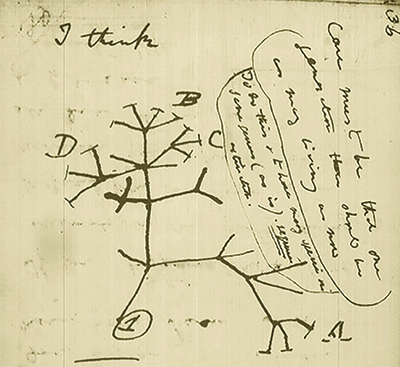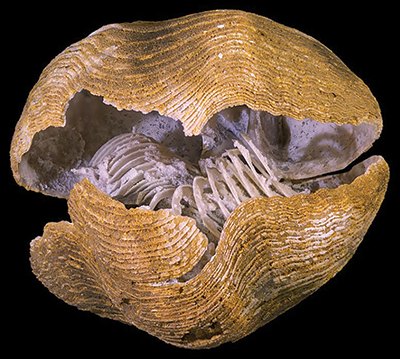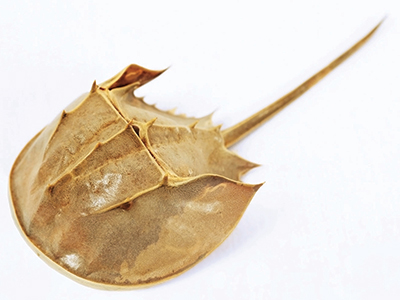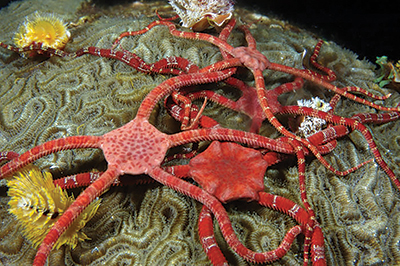 The modern theory of evolution has its roots in Charles Darwin’s 1859 book On the Origin of Species, in which he proposed the fundamental conjecture that “all the organic beings which have ever lived on this earth have descended from some one primordial form.”1 In the extrapolation of this concept, millions of progressive life forms should have developed in an evolutionary continuum along all the different branches of life leading up to the huge diversity of plants and animals that are alive today. Many current biology textbooks depict this universal common ancestry as a “tree of life” similar to the analogy that Darwin first proposed over 160 years ago.
The modern theory of evolution has its roots in Charles Darwin’s 1859 book On the Origin of Species, in which he proposed the fundamental conjecture that “all the organic beings which have ever lived on this earth have descended from some one primordial form.”1 In the extrapolation of this concept, millions of progressive life forms should have developed in an evolutionary continuum along all the different branches of life leading up to the huge diversity of plants and animals that are alive today. Many current biology textbooks depict this universal common ancestry as a “tree of life” similar to the analogy that Darwin first proposed over 160 years ago.

This evolutionary tree of life Darwin got going has many problems explaining both living organisms and the fossil record. Chief among them is the lack of transitional forms. Not only do we not see one fundamental type of creature evolving into another today, we see no evidence of transitional forms in the fossil record. Renowned evolutionary paleontologist Stephen J. Gould admitted this embarrassing fact:
The extreme rarity of transitional forms in the fossil record persists as the trade secret of paleontology. The evolutionary trees that adorn our textbooks have data only at the tips and nodes of their branches; the rest is inference, however reasonable, not the evidence of fossils.2
Darwin’s Dilemma
In Darwin’s day the fossil record was much less documented than it is today, but one of its most embarrassing enigmas deeply troubled him—the Cambrian Explosion. Its glaring contradiction of evolutionary expectations still remains. In the Cambrian Explosion, numerous forms of highly complex animal life appeared suddenly in the rock record with absolutely no evolutionary precursors.
At the time Darwin’s Origin was published in the 1800s, the lowest-most fossiliferous rock layer where complex life first appears—what we now call the Cambrian—was then known as the Silurian. Concerning this explosion of life and the problem it posed for his theory, Darwin stated:
Consequently, if my theory be true, it is indisputable that before the lowest Silurian stratum was deposited, long periods elapsed, as long as, or probably far longer than, the whole interval from the Silurian age to the present day; and that during these vast, yet quite unknown, periods of time, the world swarmed with living creatures. To the question why we do not find records of these vast primordial periods, I can give no satisfactory answer….But the difficulty of understanding the absence of vast piles of fossiliferous strata, which on my theory no doubt were somewhere accumulated before the Silurian epoch, is very great.1
Sudden Appearance of Complex Animal Life
Evolutionists claim the Cambrian rock layers were first laid down about 540 million years ago. Highly complex multicellular creatures known as metazoans and a plethora of hard-shelled creatures suddenly appear in these sedimentary strata. Examples include clams, snails, horseshoe crabs, trilobites, sponges, brachiopods, worms, jellyfish, sea urchins, sea cucumbers, starfish, brittle stars, sea lilies, and other complex invertebrates.
Making this mystery even more evolution-defying is the fact that the rock layers below the Cambrian are devoid of invertebrates. While this was known in Darwin’s day, the mystery has never been resolved, and a 2018 study reported that a thorough re-analysis of the Precambrian Ediacaran sediments showed they are completely empty of evolutionary ancestors. The researchers stated, “The lack of euarthropod body fossils in the Ediacaran biota is mirrored in all other preservational regimes in the Precambrian, including BSTs [Burgess Shale type deposits], phosphatised microfossils, and chert deposits.”3 They also found that the ancestors to the Cambrian creatures were “strikingly absent” in the Ediacaran period.

Living Fossils of the Cambrian
The Cambrian strata are rich with fossils of creatures whose counterparts can still be found alive today essentially looking the same as their predecessors buried supposedly hundreds of millions of years ago. In other words, these so-called living fossils have not evolved at all, a phenomenon evolutionists call stasis. Not only do these creatures show no sign of evolutionary change, but many also disappear in rock layers above the Cambrian only to reappear as modern living creatures. While evolutionists have no good explanation why such creatures would abruptly appear hundreds of millions of years ago and then disappear for millions of years only to reappear and now be happily alive, a biblical Flood-based interpretation perfectly explains the data. Creationists know from both the rock record and the Scriptures that the Genesis Flood was a progressive year-long global event. The succession of fossils in the rock strata largely represents the progressive burial of ecological zones characterized by the plants and animals they contained. Thus, the Cambrian strata contain ocean-dwelling animals that would have been the first creatures to be killed and buried in Flood sediments.

An excellent example of a living fossil from the Cambrian is the brachiopod. It has a hard shell like a clam, only in a different configuration. The term “brachiopod” is derived from the Greek words brachion (arm) and podos (foot), which refers to the long pedicle that protrudes from a foramen (opening) in the shell that affixes the marine creature to the base of its burrow in the ocean floor.
Another example of a Cambrian living fossil is the amazing horseshoe crab. This curious complex arthropod with 10 eyes plays an important role in the ocean’s ecosystem. Because horseshoe crabs come up onto the shorelines and beaches to reproduce, they are commonly observed around the world.
Yet another living fossil from the Cambrian is the brittle star, which is found in many ocean ecosystems in a huge diversity of species. Brittle stars are similar to starfish but have much longer snake-like arms that protrude from a central disc. They can reproduce sexually as well as through fission where the central disc divides in two and the newly created discs grow arms.

Exceptional Cambrian Soft-Bodied Imprints
Extraordinary soft-bodied fossil preservation is known as Lagerstätte (German lager “storage/lair” and stätte “place”). Cambrian Lagerstättes provide spectacular examples of fossils of soft-bodied creatures with exceptionally preserved details. These fossils speak of a rapid cataclysmic burial in fine sediments in the very recent past. Some of the best examples of this near-perfect fossilization can be found in the Cambrian Maotianshan shales, Burgess Shale, and the recently exploited Qingjiang biota (supposedly ~518 million years old) that is chock-full of complex creatures.4 One group of soft-bodied creatures found in a large diversity of body plans are cnidarians, which contain many creature types that are still alive today and are therefore classified as living fossils. Cnidarians include a variety of stationary types (sea anemones, corals, sea pens) and swimming varieties (jellyfish, box jellies). Cambrian ctenophore fossils are also found in abundance in a wide variety of body plans, and many types of ctenophores are also still alive today.
In addition to the huge array of soft-bodied creatures, Cambrian deposits contain many different types of complex creatures with a chitinous skin or exoskeleton (shell). One amazing example of a Cambrian invertebrate alive today is the Kinorhyncha (mud dragon), a common small marine invertebrate that lives in mud and sand. Another excellent example would be a group of unsegmented marine worms called priapulids that are also alive today. Only a rapid catastrophic burial such as that recorded in Genesis could account for this exceptional preservation. And the fact that these soft-bodied creatures appear suddenly with no evolutionary precursors with many still alive today totally refutes evolution.
Precambrian Tube Worm Soft Tissue Preservation
The incredible preservation of soft tissue impressions combined with an explosion of animal life in virtually every conceivable body plan with no evolutionary precursors utterly defies all naturalistic explanations—as does the fact that fossils from these rock layers contain soft tissues. The presence of actual undecayed tissues in fossils found at virtually every level of the geologic column completely undermines evolution’s deep-time paradigm.
Secular researchers have published at least 113 different technical papers describing the presence of soft tissues and biomolecules in fossils supposedly millions of years old.5 Examples include mummified dinosaur skin, dinosaur blood hemoglobin, and dried-up eyeball retinas from a mosasaur.6-7 The problem is that the science of tissue decay doesn’t permit millions of years. This evolutionarily inconvenient fact makes a 2014 soft tissue discovery one of the most spectacular—original pliable marine worm tube tissue found just below the bottom-most layer of the Cambrian.8-9
Publishing in the Journal of Paleontology, researchers detailed delicate fossil casings manufactured by beard worms in a rock layer just below the Cambrian dated at 551 million years. The buried fossils had chitin-containing worm tubes that look exactly the same as those made by living tube worms. In fact, the complex and intricate structural cross-layering of the fibers is still visible.
One of the most confounding anti-evolutionary features of these fossil worm casings was that they were not mineralized at all. Permineralization is a fossil-forming process in which mineral deposits form internal casts of organisms by filling the spaces within tissue. In the case of these tube worm casings, the researchers ruled out preservation by different forms of mineralization. They stated, “Minerals have not replicated any part of the soft tissue and the carbonaceous material of the wall is primary [not replaced], preserving the original layering of the wall, its texture, and fabrics.”9 The paper included electron micrographs of some of those fabrics’ fossilized fibers. In fact, it described the worm casings as still “flexible, as shown by its soft deformation.” And affirming that original biomolecules were still intact, the authors stated, “The body wall of S. cambriensis [fossil worm] comprises a chitin-structural protein composite.”9 The notion that chitin or any intact biological material like soft tissue can last longer than a million years has no experimental support. The only valid explanation of these fossils is that the tube worms, which we know from living specimens lived at depths of 100 to 10,000 meters in the ocean, obviously would have been amongst the first creatures buried in the global Flood.
Conclusion
The Cambrian Explosion is a complete evolutionary enigma for a number of important reasons. First, incredibly complex animal life appeared suddenly and without any sign of preceding evolutionary ancestors. Second, many creatures that appeared in the Cambrian layers have living counterparts today that show no sign of evolution—a paradox evolutionists label living fossils. Third, tube worms (another living fossil) have been found in rocks just below the Cambrian, and their fossils yielded soft, pliable tissue. The fact that their tissue, along with many other examples, is still soft and undecayed indicates they were buried only thousands of years ago in the global Flood described in Genesis.
Thus, according to a model of progressive burial by ecological zonation, we see that the Cambrian layers were the first to be deposited near the beginning of the global Flood in the sedimentary rock strata known by geologists as the Sauk Megasequence.10 The evidence provided by Cambrian fossils continues to say “no” to evolutionary expectations.
Click here for other articles in The Fossils Still Say No series.
References
- Darwin, C. 1859. On the origin of species by means of natural selection. London: John Murray.
- Gould, S. J. 1977. Evolution’s Erratic Pace. Natural History. 86 (5): 12-16.
- Daley, A. C. et al. 2018. Early fossil record of Euarthropoda and the Cambrian Explosion. Proceedings of the National Academy of Sciences. 115 (21): 5323-5331.
- Fu, D. et al. 2019. The Qingjiang biota—A Burgess Shale-type fossil Lagerstätte from the early Cambrian of South China. Science. 363 (6433): 1338-1342.
- List of Biomaterial Fossil Papers (maintained). Online document, accessed October 1, 2020.
- Thomas, B. 2014. Original Tissue Fossils: Creation’s Silent Advocates. Acts & Facts. 43 (8): 5-9.
- Thomas, B. ‘80 Million-Year-Old’ Mosasaur Fossil Has Soft Retina and Blood Residue. Creation Science Update. Posted on ICR.org August 20, 2010, accessed October 1, 2020.
- Thomas, B. Still Soft after Half a Billion Years? Creation Science Update. Posted on ICR.org May 5, 2014, accessed October 1, 2020.
- Moczydlowska, M., F. Westall, and F. Foucher. 2014. Microstructure and Biogeochemistry of the Organically Preserved Ediacaran Metazoan Sabellidites. Journal of Paleontology. 88 (2): 224-239.
- Clarey, T. 2018. Minimal Continental Coverage During the Early Flood. Acts & Facts. 47 (3): 8.
* Dr. Tomkins is Director of Research at the Institute for Creation Research and earned his Ph.D. in genetics from Clemson University.




